Home / TTK News / Industry News / How does SMS nonwoven ensure the protective effect of isolation gowns after disinfection?
How does SMS nonwoven ensure the protective effect of isolation gowns after disinfection?
In medical protection scenarios, SMS nonwoven anti-virus first-level isolation gowns build a safety barrier for medical staff with their performance. Why can the isolation gown always maintain its protective performance without degradation in the frequent daily disinfection work? This is closely related to the unique chemical solvent resistance of SMS nonwovens.
SMS nonwovens are made of spunbond layer (Spunbond) and meltblown layer (Meltblown) through three layers of hot rolling. This composite structure is the basis for its special properties. The spunbond layer provides physical strength and structural stability for the isolation gown, making it not easy to break during wearing and use; the middle meltblown layer, with its fine fiber structure, undertakes the task of efficiently filtering viruses, bacteria and other particles. The two complement each other and together constitute the cornerstone of the isolation gown protection system.
In hospital environments, chemical solvents such as alcohol and chlorine-containing disinfectants are widely used for disinfection and sterilization, which puts strict requirements on the materials of protective equipment. SMS nonwoven anti-virus primary isolation gowns show good tolerance to these chemical solvents. Its resistance to chemical solvents stems from the molecular structure characteristics and composite process of the material itself. From a molecular level, the polymer molecular chains in SMS nonwovens are tightly arranged and stable, and chemical solvent molecules are difficult to penetrate and destroy their molecular structure, thereby avoiding the degradation of material performance caused by chemical erosion. In terms of composite technology, hot rolling treatment makes the spunbond layer and the meltblown layer tightly combined to form a relatively dense structure, further blocking chemical solvents from invading the internal fibers and ensuring the integrity of each layer structure.
Taking alcohol disinfection as an example, when medical staff use alcohol to wipe and disinfect the surface of isolation gowns, the hydrophobicity of the SMS nonwoven surface makes it difficult for alcohol droplets to penetrate quickly. Even if alcohol is briefly attached to the surface, its molecules are difficult to break through the dense fiber structure and stable molecular chains of the nonwoven fabric, and cannot cause substantial damage to the internal fibers. As for chlorine-containing disinfectants, despite their strong oxidizing properties, SMS non-woven fabrics' resistance to chemical solvents enables them to resist the erosion of chlorine-containing disinfectants, avoiding problems such as material embrittlement, breakage, or decreased filtration performance. This feature ensures that the isolation gown can maintain its effective barrier ability against viruses and continue to play a protective role even when it is used multiple times and disinfected frequently.
In addition to directly resisting the erosion of chemical solvents, the resistance to chemical solvents of SMS non-woven fabrics is also reflected in its compatibility with the disinfection process. Hospitals usually use a variety of disinfection methods such as soaking, wiping, and spraying. SMS non-woven anti-virus first-level isolation gowns can maintain stable performance under different disinfection methods. During the soaking disinfection process, the non-woven fabric will not swell or deform due to long-term contact with chemical solvents; when wiping disinfection, the surface fibers will not fall off or the structure will not be damaged due to the dual effects of external force and chemical solvents; when spraying disinfection, the fine mist disinfectant particles will also not destroy its protective structure. This all-round adaptability ensures that the isolation gown can consistently play a protective role in various disinfection scenarios.
In addition, the SMS non-woven anti-virus first-level isolation gown's resistance to chemical solvents also indirectly improves its practicality and economy in medical environments. Because the isolation gown can withstand the erosion of common disinfectants, it extends its service life, reduces the need for frequent replacement of protective equipment, and reduces the consumption of medical resources. The stable protective performance also provides medical staff with continuous and reliable safety protection, allowing them to feel more at ease in high-risk medical treatment work.
Related Products
-
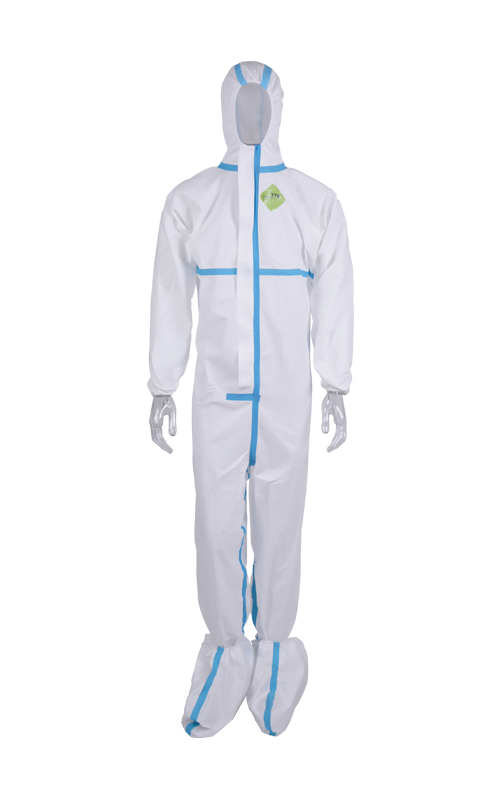
PP PE Nonwoven Disposable Breathable Coverall With Tape TTK-A01
Disposable Coverall With Tape
-
-2-1.png)
PET+PE Non-woven Material Disposable Coverall With Tape TTK-A01
Disposable Coverall With Tape
-
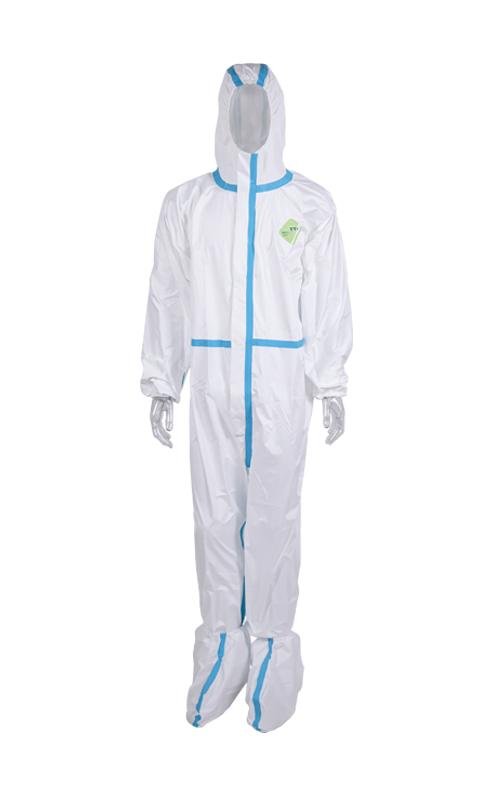
Woven Material+PTFE Membrane Disposable Coverall With Tape TTK-A03
Disposable Coverall With Tape
-
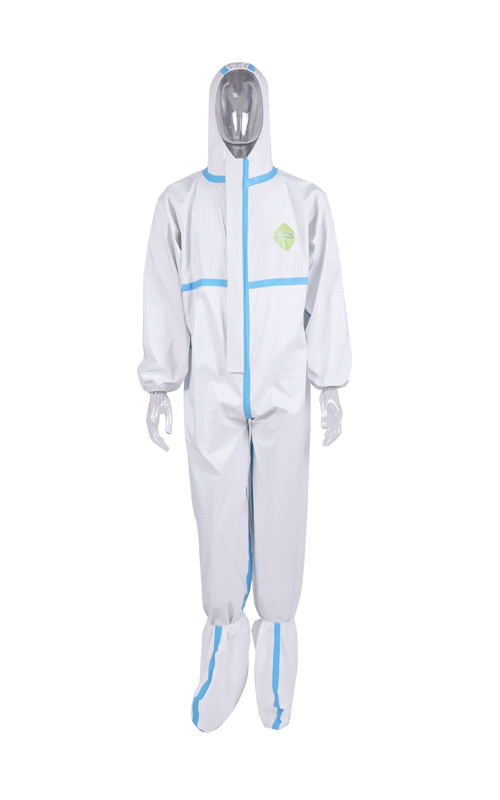
Woven Material+PTFE Membrane+Tricot Disposable Coverall With Tape TTK-A04
Disposable Coverall With Tape
-
-5.png)
Isolation Biochemical Protective -Comfortability Disposable Coverall With Tape TTK-A04
Disposable Coverall With Tape
-
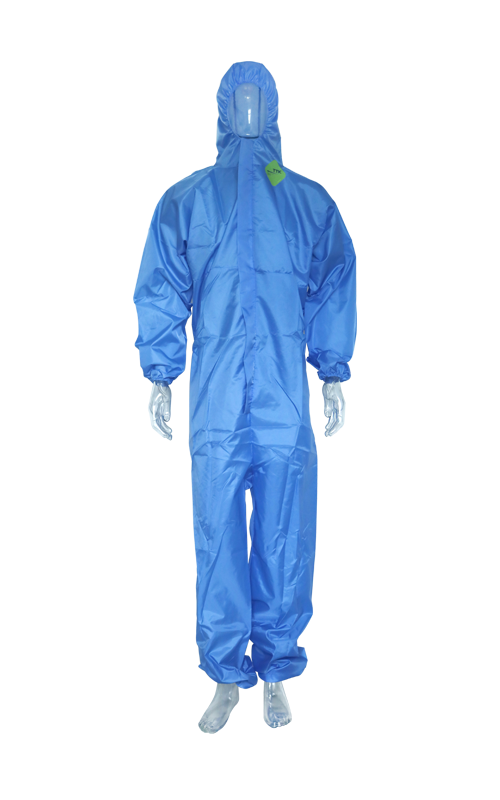
210TWoven Coating Protective Material-blue Disposable Coverall Without Tape TTK- B01
Disposable Coverall Without Tape
-
.png)
White 210TWoven Anti- Virus Disposable Coverall Without Tape TTK- B01
Disposable Coverall Without Tape
-
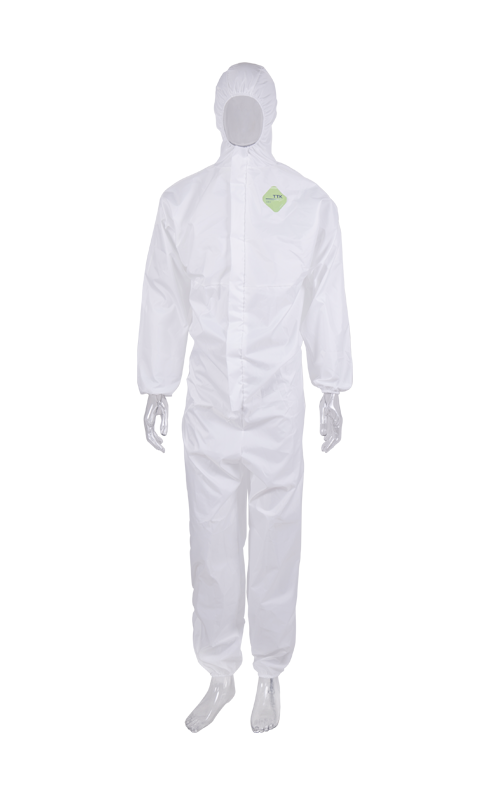
SMS Non-woven Material Disposable Coverall Without Tape TTK-B02
Disposable Coverall Without Tape
-
-1.png)
PP+PE Non- woven Material Disposable Coverall Without Tape TTK-B03
Disposable Coverall Without Tape
-
-1.png)
SMS Non-Woven Anti-Virus/ Waterproof/Breathable Level 1 Isolation Gown/Surgical Gown/Patient Gown/Nursing Gown TTK-C02 Series 100
Level 1 Isolation Gown

 English
English 简体中文
简体中文